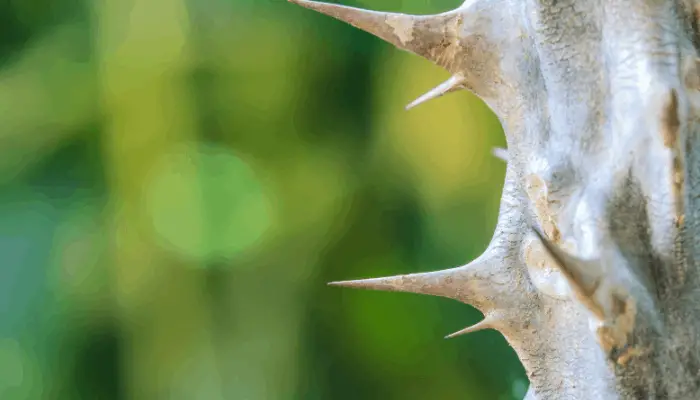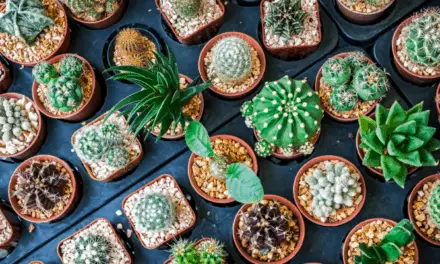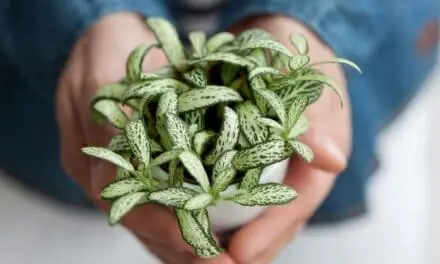The crown of thorns is an absolutely beautiful plant to keep on your porch in a pot during the hotter months.
However many people who are new to taking care of these gorgeous plants notice that their leaves can begin to droop.
In this article, we’ll look at the most common cause of a drooping crown of thorns, how to prevent it, and what you should do when it happens.
Table of Contents
Why Is My Crown Of Thorns Drooping?

The reasons your crown of thorns plant is drooping are all surrounding how much water it’s receiving. Too much water causes problems that make the plant droop and go limp.
These succulent plants don’t need a lot of water to survive and keeping them in a moist environment could lead to stem rot.
When stem rot occurs the plant then becomes susceptible to other fungal diseases, which cause the plant to become droopy.
With most plants, lack of water causes drooping.
The crown of thorns is entirely different from your regular plant and a little bit too much hydration could actually ruin it.
Always keep in mind that these plants are well adapted to go long periods of time without water.
Related Article: Why Is My Crown Of Thorns Losing Leaves? (And What To Do)
Do A Hydration Check
Before watering them, always do a hydration check first.
You can do this by sticking a finger straight in the soil to check how damp it is.
If you feel any moisture then it is best to avoid giving the plant water.
What Happens When You Over Water Your Crown Of Thorns
Fungal diseases are the leading cause of stem rot and drooping in these plants.
There are two different fungal diseases that affect the plant causing it to droop, Rhizoctonia fungus and fusarium fungus.
Rhizoctonia Fungus
This fungus usually begins in the soil.
While overwatering is one of the biggest factors leading to Rhizoctonia fungus, another major one is humidity.
Although this plant does well in hot environments, a humid location is a wrong spot for them.
This fungus embodies itself onto the plant’s roots, making its way to the stem.
When Rhizoctonia fungus occurs, the plant begins to look very unhealthy which leads to drooping.
Another sign that this fungus may be present is early stem lesions in the soil.
If there is too much moisture, it will appear that the area where the lesions are is water stained.
However, as the fungus gets worse the lesions appear black or brown.
Fusarium Fungus
While Rhizoctonia fungus only affects the stem and roots, fusarium fungus is much nastier as it can infect any area of the plant.
When this occurs it may look as though the plant is suffering from dry rot.
This disease causes mushiness, which causes the crown of thorns to start drooping.
One thing many people notice is a purple border around the soil line as the plant begins to sink over.
Any areas on the stem that have been cut or pruned are at higher risk of becoming infected.
Over time this fungus can spread to the base of the stem, which could lead to the entire stem becoming infected and rotting.
How To Stop Your Crown Of Thorns From Drooping
These plants are native to Madagascar and that is why they do their best in hot and dry conditions.
In order to keep them healthy, it’s best to keep them in an environment they are adapted to living in.
Since some fungi can begin in the soil you should make sure that the crown of thorns is planted using sterile growing mediums.
Clean Tools Before Use
Many people overlook the tools they are using as well.
However, to take every precaution along the way it’s a good idea to make sure all the tools you plan on using around the crown of thorns plant have been cleaned.
The pot that it gets planted in should be sterile as well.
The most important factor in preventing your crown of thorns plant from drooping and developing a fungus is how much water it gets.
Always check the soil to make sure it is completely dried out before adding more water.
When adding water, try to get it in as deeply as possible.
Also, try to avoid getting any water on the stems or leaves of the plant.
How To Revive Your Crown Of Thorns?
If the stems of your crown of thorns get mushy and the leaves begin to droop, turn yellow and fall off, move your plant to a bright and warm location that has good air circulation.
And allow the top 50 percent of the soil to thoroughly dry out before you water the plant again.
Final Thoughts
One thing to always remember about the crown of thorns plants is that they have limited water-storing capabilities.
Not paying attention to how much water is being given to them could result in a lot of problems.
To stop your crown of thorns from drooping and keep it in a healthy condition try to give it limited amounts of water and keep tabs on exactly how much water it is getting.
Water it only when the soil feels dry about an inch below the surface.
Water the plant thoroughly and allow excess water to drain away.
And never let your crown of thorns sit in water or wet soil for too long or it can cause the roots to rot.




